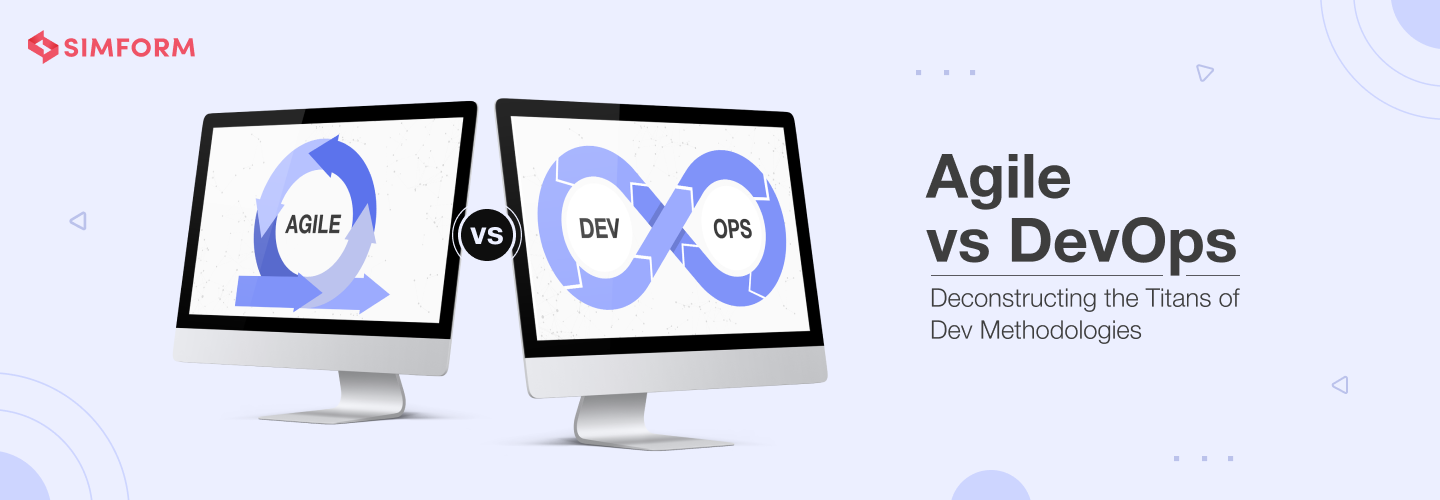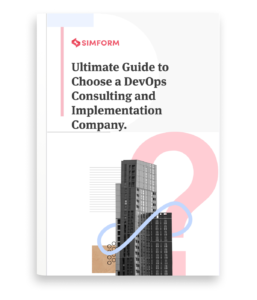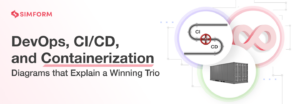Agile vs. DevOps: Deconstructing the Titans of Dev Methodologies
Whoever first tried to compare Agile vs. DevOps likely upset the global software development community. Comparing these methodologies is like comparing apples to oranges.
But don’t worry. Since it is a question of concern, we have gotten to the depths of how Agile and DevOps compare against and work with each other and presented our verdict in this blog post.
Agile and DevOps have had a complex relationship – both are well-known for revolutionizing business processes through speed, iterations, and collaborations. Words like “digital transformation”, “revolution”, “innovation”, and “quick software delivery” are always associated with it.
So, what do we make up with these two terms? Are they interrelated? Are they different? Or do they simply complement each other? Let’s find out.
Let’s take a step back
Before we move ahead with the history of how Agile and DevOps came into existence, it is crucial to fully understand that Agile and DevOps are distinct methodologies, and cannot be compared.
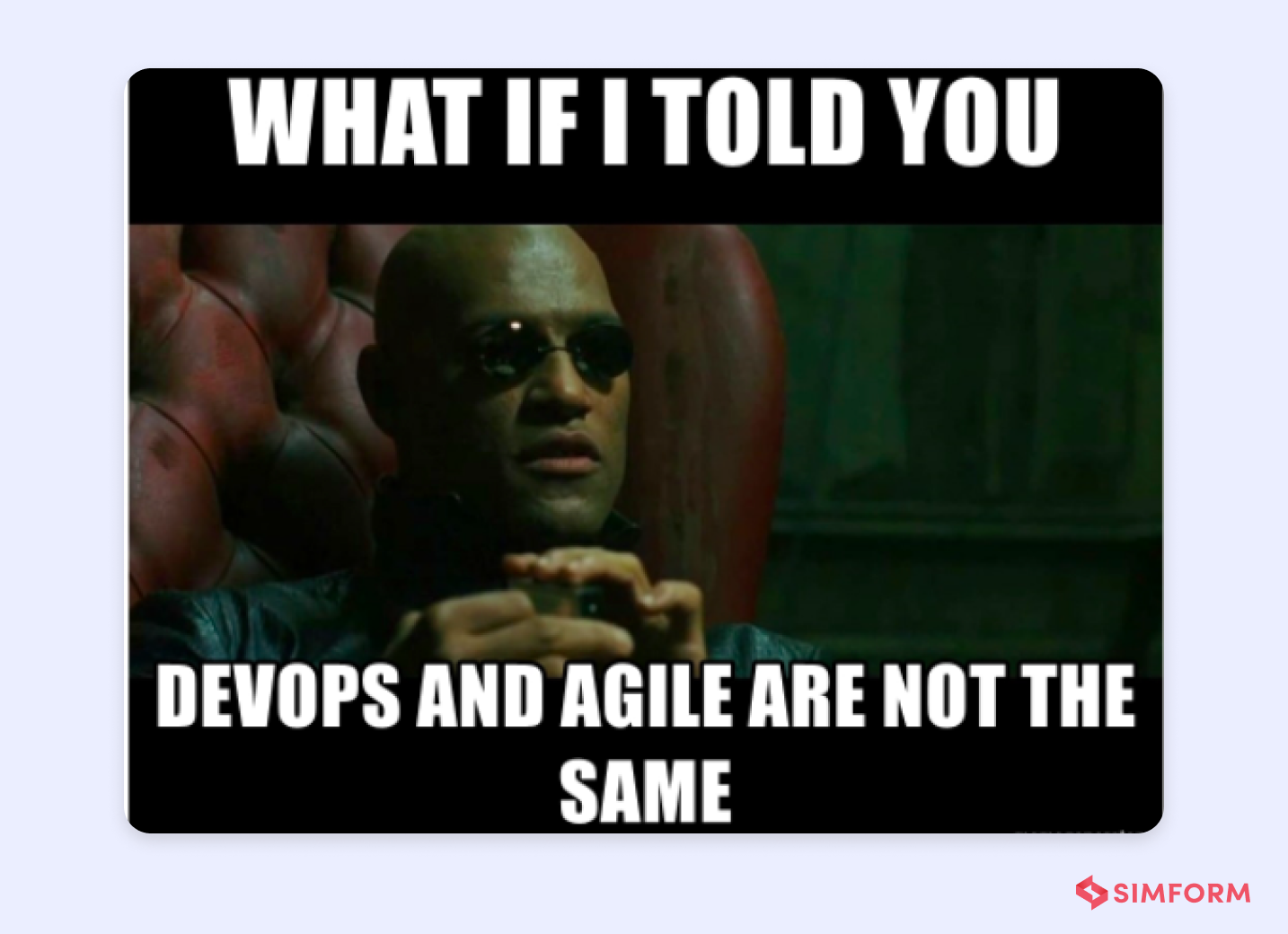
DevOps vs. Agile is a glitch in the matrix – it exists, it’s an ever-growing topic, the topic is good enough to blind you from actuality, and some chosen engineering heroes (ehem ehem! *pulls collar up*) are trying to bring out the reality.
While both are integral parts of software development processes, their functionalities differ a bit in terms of business requirements. How? Let’s discuss.
What is Agile?
Introduced as an alternative to the traditional waterfall methodology, Agile is an iterative methodology that focuses on continuously delivering small manageable increments of a project through development and testing.
Agile breaks down complex processes into smaller units known as “sprints,” which typically span from two weeks to a month. It focuses on incremental deployments of each sprint and their integration into final testing. To implement Agile, one can avail of various tools such as Kanban board, Scrum, XP, Active Collab, etc.
What is DevOps?
DevOps is a mindset, a culture that emphasizes integration, communication, and collaboration within the development team and operations team. The broad objective of adopting the DevOps culture is to deploy code to production faster and in an automated way.
Unlike traditional software development practices, DevOps is a continuous process encompassing building, testing, deploying, and monitoring. It aims to ensure the delivery of quality software incessantly. Incorporating DevOps presents many salient advantages, including faster, more reliable, and effortlessly integrated deployments.
History of Agile and DevOps
As always, it all started with the traditional form of a software development process known as the waterfall approach. This rigid software development and testing pattern emphasize the need to follow a methodological order in a vertical sequence –
- Understanding clients’ ideas and their desired requirements
- Selecting a design pattern for the application
- Implementation
- Verification
- Maintenance
It might come across as the perfect solution for a development and testing team since there’s a standardized process in place.
But that’s precisely where the problem started…
The waterfall model is rigid and a one-way sequential process – developers can’t move back a step to make space for customer feedback or adopt an iterative approach. Iterative cycles go through the entire sequence process, eventually wasting a lot of time releasing the desired software.
Furthermore, siloed departments for developers, QA testers, and system admins create communication gaps that are hard to address when the app has to go through testing or scaling.
All that remains are teams pointing fingers at each other and an incomplete, imperfect application that is never ready, ironically, even after its launch. Team members were rarely happy with the product they delivered, and users were left with a faulty, insecure application with a bad user experience.
This is where agile came into being!
Incorporating client feedback and iterations were impossible with a singular, linear workflow like that of a waterfall method. Agile was the answer for resolving the long, rigid, and repetitive process that engaged the entire team to one application with endless backlogs or issues to troubleshoot.
Agile software development introduced a new way to break the entire product into small pieces and later integrate them for the final test. The goal was to bridge the gap between developers and stakeholders so that the agile team could meet customer needs and expectations, even in real-time.
Now let’s get into the real story of how agile even came up to the forefront…
The introduction of the agile methodology is a bit more dramatic than what we all thought. You might think that this one person or a group of developers from one organization experimenting with a work process suddenly found breakthrough results.
Well… that’s not how it went!
A group of seventeen software engineers experts got together and checked in at a ski resort in Utah in 2001 (cliche). They decided to pen down the methods they have been using in combination with the traditional development process. These authors include Martin Fowler, Robert Martin, Dave Thomas, Kent Beck, and many more well-famous and accomplished in the current software engineering landscape. The result of their authorship is what we today know as the Agile Manifesto.
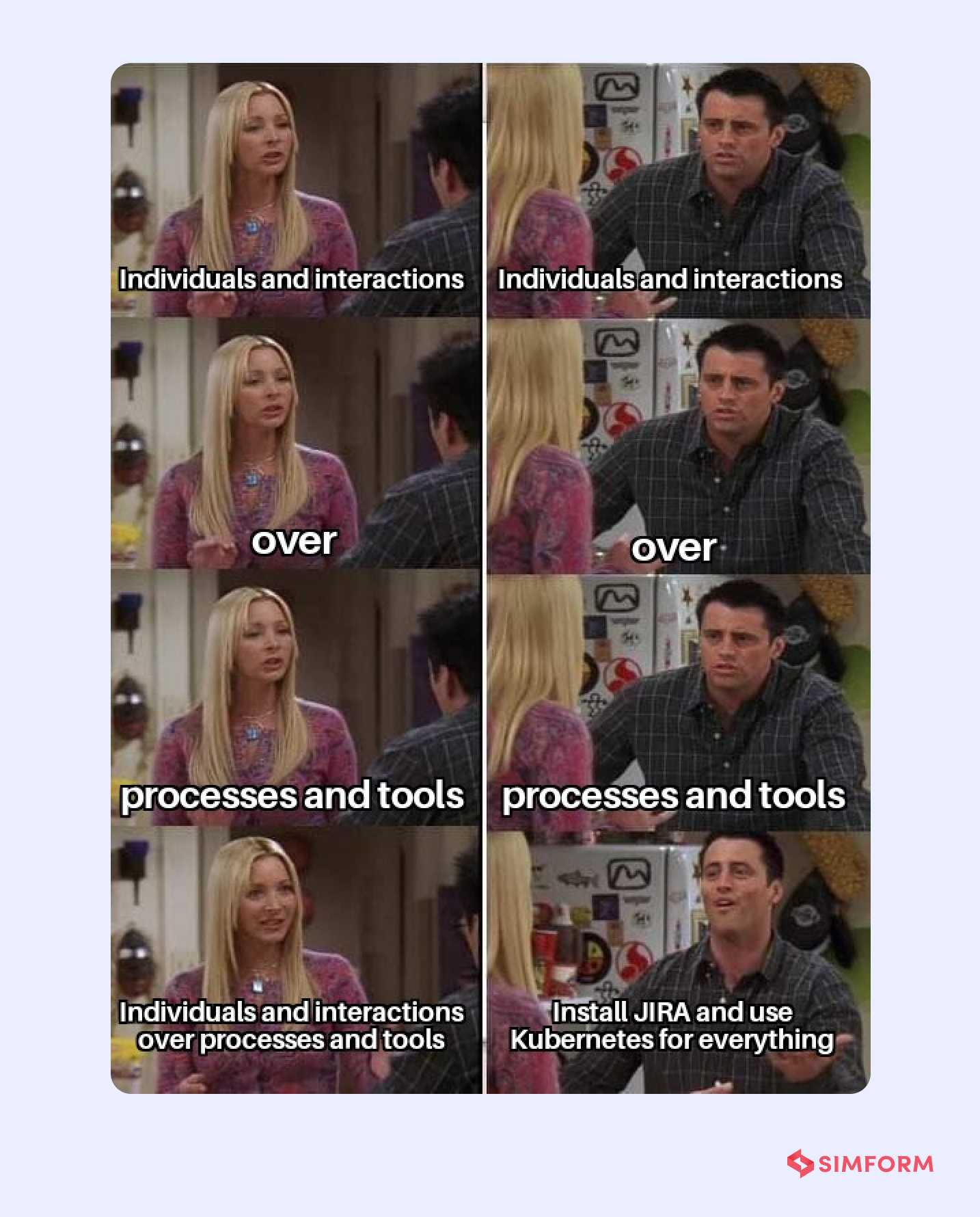
Agile improved team collaboration, paced up the time to deliver a product, boosted predictability, reduced risks, and even bridged the gap between developers and clients.
Yet, the developers’ cohort was not satisfied!
There was too much pressure on the developers to perfect the code, and system administrators had little to no time to contribute to the entire process.
While communication improved with the stakeholders on one end, the internal communication between developers and operations teams was not streamlined. This caused internal issues that somehow slowed down the process, despite improving the entire software development process.
Then came the showbiz of the industry – DevOps…
Agile took over the software development industry for 7 years, until two developers, Andrew Clay and Patrick Debois, decided to work together in 2008 and fill the gaps developers face with the modern agile process. It is not that Agile was a problematic solution, rather, it was incomplete. Engineers needed more to improve the communication gap across separate departments and accelerate the time it took to collaborate and deliver products.
DevOps was the solution to bridge the productivity gap between the developers and the operations teams. It took only one event in Belgium in 2009 to bring the world to a new recognition that DevOps was the new titan in the software engineering industry.
Mind you, the DevOps event or the methodology was never meant to override or take over other methodologies. Instead, it was simply a cultural shift that would improve cross-departmental integrations for quick product delivery.
“It’s complicated”: Agile and DevOps
The relationship between Agile and DevOps has always been a little complicated – they exist independently, yet overlap with one another to a great extent.
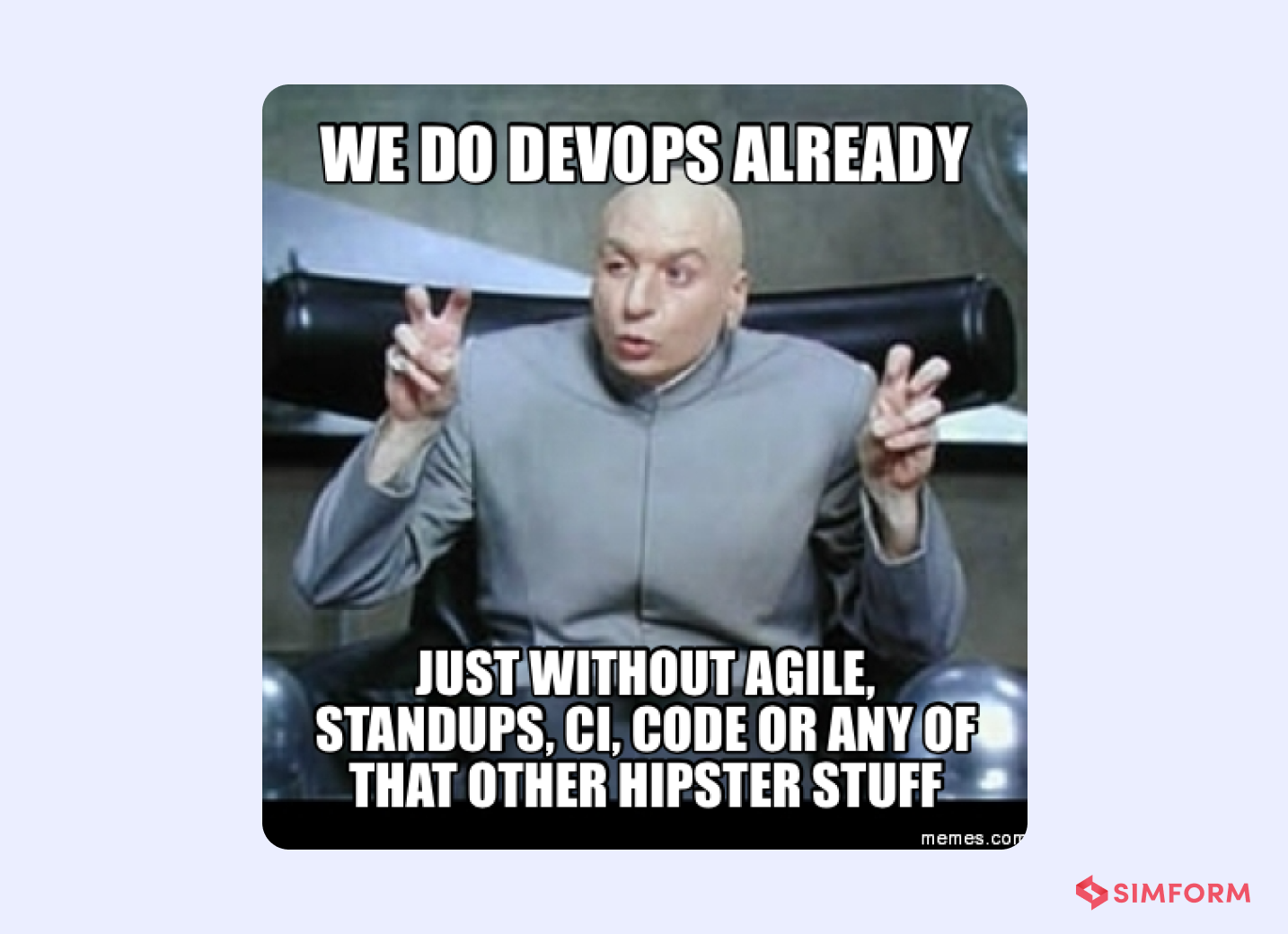
While both are not exactly the same thing, both methods complement each other. When used together in the work processes, they are known for providing greater output, maximizing efficiency, and even reliable results, irrespective of how complex the project is.
Now how do we really decipher this behavior?
The questions usually range from –
“Are DevOps and Agile interrelated?”
“Is it worth risking the cultural shift to adopt both?”
“Is it a risk-free evolutionary developmental method for complex projects?”
“How productive is it for the team in the long run?”
To answer these questions – YES, DevOps and Agile can be interrelated. Statistical evidence suggests that amongst the companies and many organizations that have adopted DevOps, 63% have experienced a continuous improvement in the product development process.
Moreover, 94% of organizations practice agile. Considering these, I absolutely believe that a cultural shift is worth the risk if it means improving organizational output and application performance.
How do Agile and DevOps interrelate?
Going back to the basics of Agile and DevOps methodology, it is clear that Agile laid the foundation for DevOps. This is because Agile focuses on the flow of software from ideation to code creation, while DevOps takes it up a notch and extends the approach to delivery and maintenance.
Interestingly, if organizations were to realize the complete implementation and benefits of Agile, then they need to implement DevOps.
Let me tell you how…
Remember the story of the 17 authors (who became the founding fathers) of the Agile Manifesto?
Although we can’t really say if it was intentional or unintentional, these authors laid down the 12 Principles of Agile methodology, emphasizing continuous integration, delivery, and even frequent release cycles. Despite being crucial agile core values, a complete sense of the CI/CD processes is only realized with the implementation of DevOps practices.
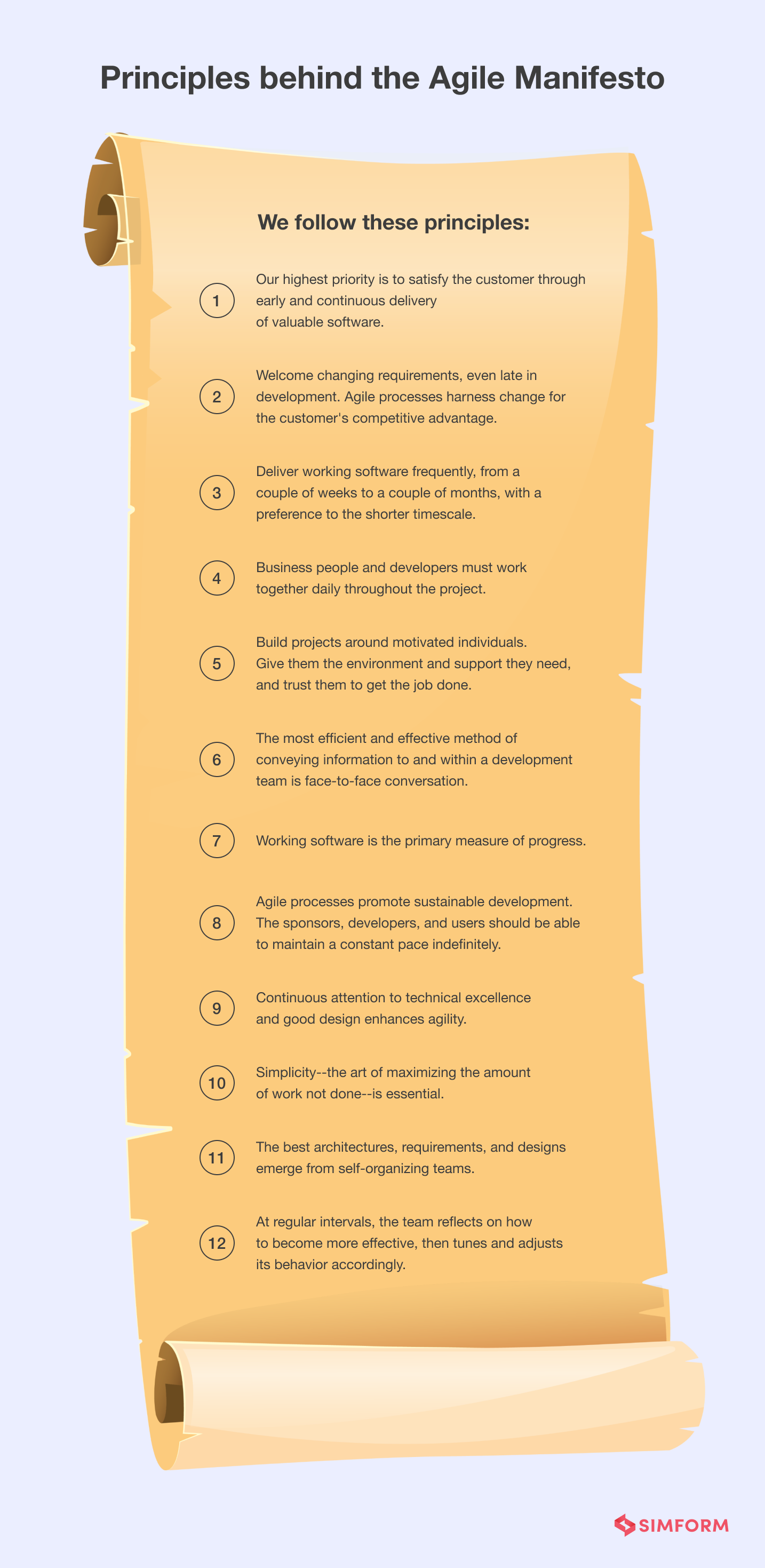
The ultimate end goal of both Agile and DevOps is to enable collaboration between different departments, achieve scalability, amplify the feedback loop, release products quickly, and improve business productivity.
If we were to see the bigger picture, organizations can rely on both DevOps and Agile methodologies to realize their software development goals and get higher returns on their investments.
DevOps vs. Agile: Creating a characteristics profile
You must have read the title and went like, “WHAT? You just mentioned DevOps and Agile cannot be compared!”
I did say that, but I’m a man of habit, and cannot help but give you the entire picture of the concept.
I’m creating a table for a conceptual comparison of both the methodologies to let you know how both differ, how they interlink, and some characteristic qualities that you would have to take into account during implementation.
| PARAMETERS | AGILE | DEVOPS |
| PURPOSE | A project management methodology | End-to-end software engineering practices |
| FOCUS | Implementing constant changes as per client requirements and feedback | Constant testing and delivery (Maintaining CI/CD pipelines) |
| MANIFESTATION | Scrum, Kanban, Lean Development, DSDM, Feature-Driven Development | Continuous Integration, Continuous Deployment, Continuous Delivery |
| SKILL SET | Team members have a similar skill set | DevOps divides and encompasses a wide variety of skill set across development and operations team |
| TIME DURATION | Agile development is managed in sprints where the time duration is less than a month | DevOps strives to deliver code to production on a daily or hourly basis |
| FEEDBACK LOOP | Customers or stakeholders | Internal DevOps team members |
| COMMUNICATION | Daily scrum. Communication with other departments is conducted at the end of one process within the software development cycle. | Inter-departmental communication, design documents, and process documentation throughout the software development cycle. |
| DOCUMENTATION | More emphasis on a working process rather than on documentation | Documentation is pivotal. |
| AUTOMATION | No priority on automation | Automation is one of the basic principles (includes automated testing, integration, deployment, and delivery) |
| POPULAR TOOLS | JIRA, Trello, Wrike, Kanbanize, Hive, etc | Jenkins, Ansible, Docker, Puppet, Chef, etc |
| SHIFT-LEFT PRINCIPLES | Teams working in an agile process works with the shift-left principle | DevOps teams adopt both the shift-right and left principles |
| CHALLENGE | Agile makes it challenging for teams to consistently match productivity levels | DevOps requires the use of development, testing, and production environments to facilitate efficient work |
| TEAM SIZE | Agile emphasizes small teams. The fewer the individuals involved, the faster they can enhance outputs | Typically involves larger teams as it involves all the stakeholders |
| SPEED VS. RISK | Agile methodologies enable teams to quickly adapt to changes and develop a strong application architecture | In DevOps, teams must ensure that any architecture modifications do not affect the overall project |
Concluding thoughts
By now, one thing is for certain – Agile and DevOps are the joint rulers in the software engineering ecosystem. If you have not adopted any of it within your organization, then I’m afraid that you are way behind in the line.
Agile and DevOps together are known for providing more benefits than implementing a single methodology alone.
If you are still thinking about Agile vs DevOps, your focus should be on its implementation and following the best practices rather than choosing one over another. They both interrelate with one another to stabilize the IT infrastructure and improve business readiness.
If you want to know more about Agile, DevOps, and its implementation for your next project, then you are at the right place. Our experienced DevOps experts can guide you through.
Comment your thoughts below or get in touch with our DevOps engineers.

